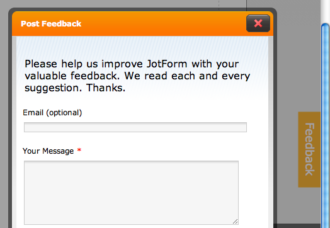Imagine there are two employees — we’ll call them Ivan and Fred.
Ivan and Fred work in the same office doing the exact same job. Their salaries are the same, as are their hours and benefits.
In fact, their situations are practically identical, except in one crucial way: Fred’s manager regularly praises him for his performance.
While Ivan’s manager rarely offers feedback, Fred’s boss lets him know he’s appreciated in genuine, thoughtful ways: She notes when Fred has led a successful meeting, and remembers details like his birthday and work anniversary.
The result? Fred’s output is higher. He’s willing to put in more time on projects, and goes above and beyond even after a task is complete.
In short, Fred is more satisfied with his job. And it shows.
Ivan and Fred are fictional, but the idea they represent is not. Take this study conducted by researchers at the University of Pennsylvania’s Wharton School, in which researchers randomly divided university fundraisers into two groups.
The first group made phone calls to solicit alumni donations as usual.
But the second group first received a pep talk from the school’s director of annual giving, who told them she was grateful for their work.
Over the next week, the fundraisers who heard the director’s message made 50 percent more calls than those who did not.
The reasons for this are backed by science: Studies have shown that feelings of gratitude trigger regions of the brain associated with dopamine, often thought of as the “reward” transmitter. Receiving praise activates this region — and the more often it’s activated, the more motivated people are to repeat the behavior that triggered it.
In the fourteen years since l launched Jotform, I’ve found that gratitude goes a long way. Still, it can be confusing to figure out where to start. Employee recognition programs often feel empty and forced. Awards can lead to others feeling overlooked.
Harvard Business Review recently set out to understand how employees perceive organizational efforts to make them feel appreciated. Their research revealed differences in thinking between managers and employees in two main ways:
- First, there was a gap between how much managers appreciated employees, and how appreciated employees felt. This may be because of the “illusion of transparency,” in which managers assume, incorrectly, that their employees already know they’re valued without managers explicitly saying so.
- Secondly, managers felt the task of communicating appreciation was overly complicated. They worried, for example, that offering praise alongside developmental feedback would foster confusion. Others worried their attempts would come off as shallow and impersonal.
These concerns are valid — but they’re also avoidable. Here are a few tried and true tips to making sure your employees know you appreciate them and aren’t just ticking off a box.
Give verbal praise — but make it genuine

Praise is one of the easiest and most effective ways to ensure an employee feels appreciated. It’s also necessary: According to Gallup, employees who are not adequately recognized at work are three times more likely to leave in the following year.
But make sure that praise is sincere, and not just an afterthought — or worse, a corporate necessity that doesn’t mean anything.
The fact is, just because an organization has an employee recognition program doesn’t necessarily equate to employees feeling appreciated.
Instead, think less about the process of recognizing someone’s efforts and more about the person themselves. This can mean writing a personalized, thoughtful note; assigning them a special project that emphasizes their talents; or leading a round of applause in front of their peers and other leaders. The most important thing is that meaningful gestures are timely, relevant and sincere.
But delivering sincere praise means taking the time to get to know someone — one good way to find out what they value is by engaging them in non-work related conversations. After all, employees are people, not robots, and what works for one may not work for another.
Offer feedback of all kinds
While every employee wants to know what they’re doing well, they also crave information on how they can improve. As one employee told HBR, receiving praise from her manager was meaningful, but because she never got improvement-oriented suggestions, she questioned the authenticity of the positive feedback she was getting.
At the same time, employees who only receive negative feedback felt defeated and were more prone to giving up.
One common mistake when delivering feedback is to create a “sandwich,” nesting suggestions for improvement in between two compliments.
Though it may be widely used, there are a number of problems with this model. For one, it’s obvious, and employees see it coming a mile away. Because it’s not especially sincere, it can also breed cynicism and lack of trust, not to mention confusion.
Like delivering praise, there’s no one-size-fits-all strategy for offering feedback. But no matter whom you’re talking to, it’s important for them to feel like you’re on their side.
One way to ensure this is by making positive feedback a routine part of your interaction, so that when you do have a suggestion for improvement, it will likely be heard for what it is: One area of growth amid an otherwise solid performance.
As Alisa Cohn at Forbes puts it,
“When you remind yourself to look for and proactively give positive feedback about what your employee is doing right you build good feeling, ally-ship, and overall a reservoir of goodwill and trust. Then, when you do need to say something that is more corrective, they will already know that you have their backs.”
But feedback isn’t just a one-way street

Back when I was a newbie developer, I felt a huge disconnect between myself and management. I had ideas for how the company could improve, but never felt empowered to share those ideas with my superiors.
Since launching Jotform, I’ve grown the company to more than 140 people — and I never want my teams to feel the way I did then. After all, companies can only reach their peak when they leverage the skills, knowledge and intuition of their people. But there’s a difference between paying lip service to employee feedback, and actually taking it to heart.
Too often, organizations feign interest in hearing employees’ opinions, but make no effort to implement their suggestions. To employees, this amounts to the same thing as not encouraging feedback at all.
The benefit of soliciting — and implementing — feedback is twofold: It gives employees a sense that their thoughts and opinions are valued, and it also makes an organization a place they actually want to work.
The benefits of flexibility and trust
Offering some flexibility to a weekly schedule isn’t just a great way to nurture creativity. It also shows employees that you trust them.
For instance, if someone has a long commute, allow them to work at off-peak times. If their presence in the office isn’t strictly required, give them the option of working remotely, or suggest they come in late the day after pulling extra hours. One employee told HBR that having his manager offer a flexible work schedule struck him as “a huge recognition.”
What’s more, flexible schedules can also make people more productive, since working on their terms allows ideas to flourish, rather than just watching a clock until it’s time to go home.
Allowing employees more freedom cultivates a sense of trust. By stepping back and giving my teams at Jotform independence, they have the space to make decisions without constantly seeking approval. That trust leads them to return with smart, consistent work.
It’s also helpful not just to show your employees you trust them, but saying it, too. Telling them things like “I know you’ve got this” makes them feel valued, which in turn brings out their best.
Showing your team they’re appreciated is a win-win for everyone, and it doesn’t cost a thing.












































































Send Comment: